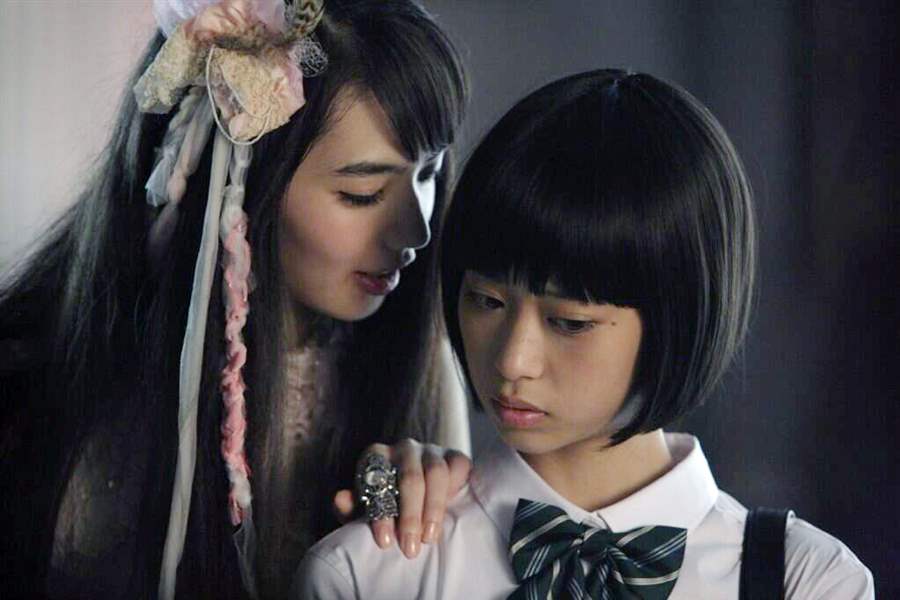
Michigan Theater to host Japanese film noir festival
Foreign focus: 10-week film series begins Monday in Ann Arbor
1/11/2017
‘The World of Kanako’ screens at 7 p.m. March 20.
Roger Ebert called film noir “the most American film genre, because no society could have created a world so filled with doom, fate, fear and betrayal, unless it were essentially naive and optimistic.”
Like bluejeans, the blues, and Western-style Democracy, film noir has been a popular U.S. export (Elevator to the Gallows, Alphaville, La vérité, Black Hair, among many, many others).
IF YOU GO
Kuro: The Dark Edge of Japanese Filmmaking
■ High and Low, 7 p.m. Monday
■ Tokyo Drifter, 7 p.m. Jan. 23
■ Branded to Kill, 9:30 p.m. Jan. 23
■ Zero Focus, 7 p.m. Jan. 30
■ A Colt is My Passport, 7 p.m. Feb. 6
■ Pigs and Battleships, 7 p.m. Feb. 13
■ Pale Flower, 7 p.m. Feb. 20
■ A Fugitive from the Past, 7 p.m. Feb. 27
■ Dragnet Girl, 7 p.m. March 6
■ Ichi the Killer, 7 p.m. March 13
■ The World of Kanako, 7 p.m. March 20
The Michigan Theater in Ann Arbor has put together a 10-week film series, beginning Monday, that spotlights the genre through the cultural lens of some of Japan’s most celebrated filmmakers.
Kuro: The Dark Edge of Japanese Filmmaking runs through March 20 at the theater, 603 East Liberty St. in Ann Arbor, with all of the screenings but one at 7 p.m. (The exception is the 9:30 p.m. showing of Branded to Kill on Jan. 23.) Tickets — $10 for adults, and $8 for seniors, students, and children — can be purchased at the theater’s box office, online at michtheater.org, or by calling 734-668-8397.
The 1963 noir classic High and Low by Akira Kurosawa kicks off the showcase. Clearly the “Kuro” in the series’ title is a nod to arguably Japan’s most-celebrated filmmaker.
But it’s not.
“The series is called ‘Kuro’ not for its inclusion of the genius Akira Kurosawa but rather ‘kuro’ being the word for dark, black in Japanese,” said Drew Waller, the Michigan Theater and the Cinetopia International Film Festival’s director of sponsorship, talent, and programming.
And while Kurosawa’s High and Low is a standout, “the series gives a certain focus on the world of noir seen through the lens of some of Japan’s most prolific filmmakers.”
Among them is visionary director Seijun Suzuki, whose 1966 “pop-art gangster film” Tokyo Drifter, screening at 7 p.m. Jan. 23, “in its Technicolor widescreen glory” is among festival highlights for Waller.
“The man saw film as a running painting and its evidence is in these pop art shots through the plights of this yakuza (gangster) seeking revenge and redemption. I am equally excited to see the new films like The World of Kanako to show the evolution of noir and how it can migrate from the underground world of yakuza but to the ‘unknown’ of youth culture, which can be just as dark sadly as the backrooms of gang conflict nowadays.”
Screenings also include 1961’s Zero Focus on Jan. 30, 1967’s A Colt is my Passport on Feb. 6; 1962’s Pigs and Battleships on Feb. 13; 1964’s Pale Flower on Feb. 20; 1965’s A Fugitive from the Past on Feb. 27; 1933’s Dragnet Girl on March 6; 2001’s Ichi the Killer on March 13, and 2015’s The World of Kanako on March 20. Select showings will also include introductions by University of Michigan film and Japanese studies professors.
The Kuro series will undoubtedly appeal to film connoisseurs — particularly those fond of noir and Japanese cinema. But its relevance reaches beyond a showcase of genre classics and culturally specific reflections.
“On a global level [these films offer] a unique vantage point on how characters approach their issues, complications, and the characters who cause them,” Waller said. “Conflict is universal, it is how you get through it that is special to the culture you are in.
“Seeing that through these dynamically shot, epic on-screen features is exactly why anyone who should find interest in seeing as many of these as possible.”
If nothing else, Kuro offers an opportunity to see the incubation of a Hollywood blockbuster, said Brian Hunter, senior programmer for the Michigan Theater and the Cinetopia International Film Festival, who put the series together with Waller, along with help from Michigan’s Center of Japanese Studies.
“All the summer blockbuster/filmmaking ‘masters’ draw some level of influence from Japanese cinema and their films, regardless of content,” Hunter said. “From [George] Lucas, whose personal relationship with Kurosawa is well noted, to Scorsese whose new film Silence features more than a few nods to Japanese classics. Hollywood cinema has borrowed liberally from Japanese cinema ... films like Star Wars [and] Jaws. Star Wars is famously a take on [Kurosawa’s] Hidden Fortress. Jaws shares similar pacing and themes with Japanese monster cinema [more recently celebrated in film with the likes of Cloverfield and Pacific Rim.]
“You can even talk about how the American western shares a lot of similar roots with Japanese samurai cinema regardless of when it’s made. The Magnificent Seven, original or remake, shares the same common themes as The Seven Samurai,” he added. “A lot of summer blockbusters wear their influences on their sleeves. It’s hard to see a film like Blade Runner and not include it in a Japanese noir series. The visual elements alone scream Japanese noir.”
Contact Kirk Baird at kbaird@theblade.com or 419-724-6734.